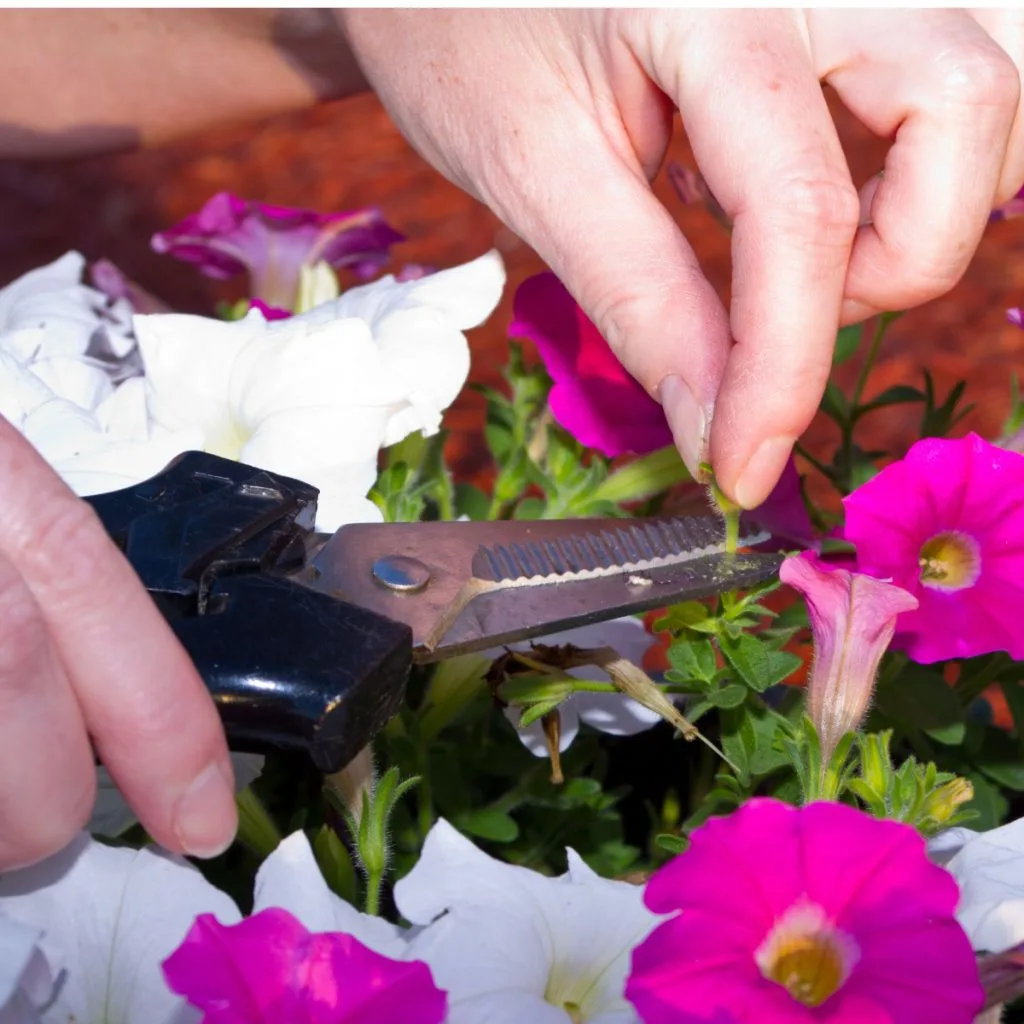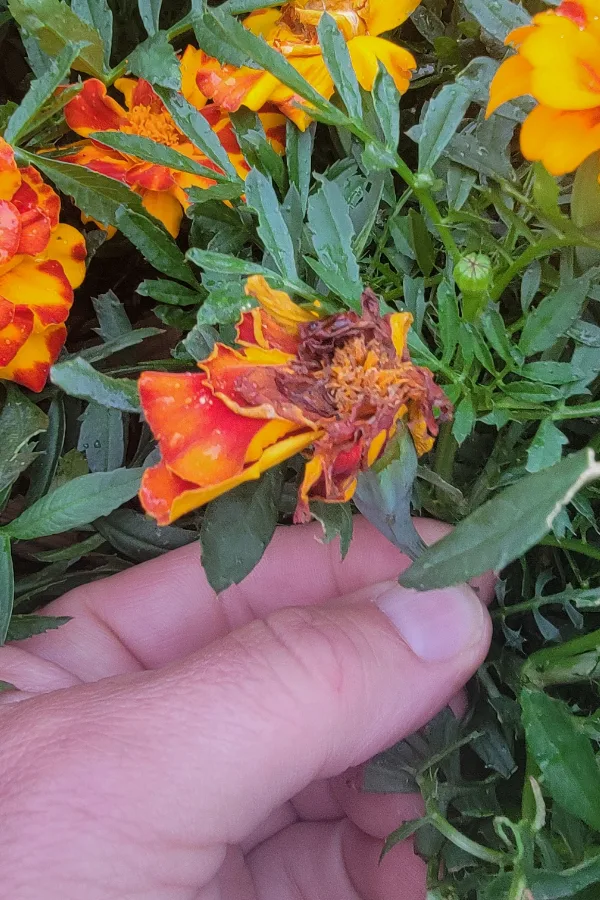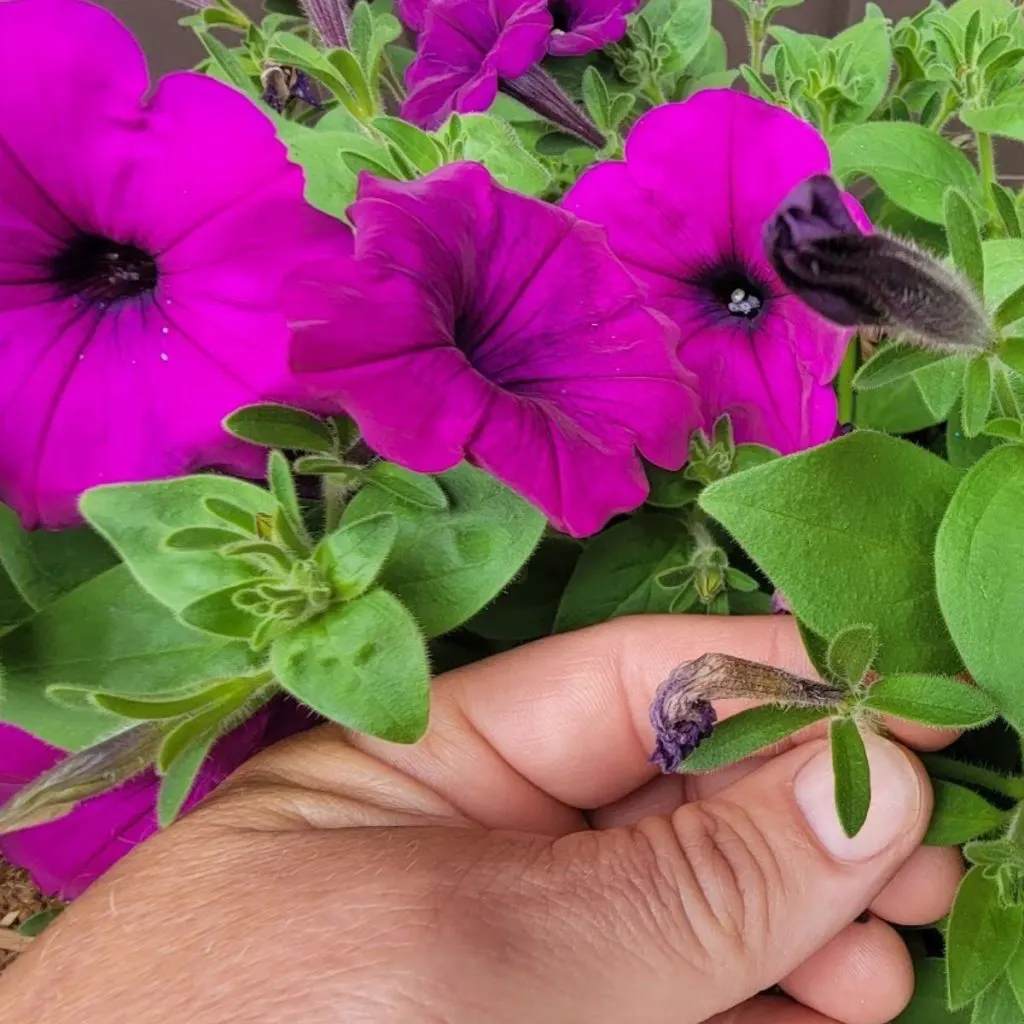Did you know that one of the easiest and best ways to keep your annual flowers blooming big all summer long is to simply deadhead them on a regular basis?
It’s true! Believe it or not, by regularly removing the fading blooms on geraniums, marigolds, begonias and a whole slew of other flowering annual plants, you can help them to stay strong, healthy – and most importantly- blooming over and over again right up until fall!
As it turns out, not only is removing the old flowers on the annuals growing in your hanging baskets, containers and flowerbeds a great way to keep your plants looking fresh and well-kept, it also helps them to conserve and use their energy where it matter most – to create more blooms!

How Deadheading Helps Plants – How To Deadhead Annual Flowers
So how does deadheading help plants to stay flowering strong? For a large majority of plants (including many perennials), as long as their flower and stem remain, the plant will continue to try to spend energy on maintaining it. Unfortunately, even as the bloom begins to completely die off.
It does this in an inherit attempt to “fix” and heal the bloom. Of course, no amount of nutrients or energy will help a flower that is simply past its prime. But the plant will still keep trying in a futile effort to revive the bloom.
Even worse, as the flower dies off, the plant will then spend even more energy to help it begin to form and mature a seed head. And all of that wasted energy starts to take a toll on the plant. That’s because the plant is spending so much of its energy on old blooms, it has little left to create new flowers or to maintain its foliage.
The good news is that by simply removing the spent flowers as they start to fade, you stop the nutrient loss immediately. And in the process, allow the plant to put all of its energy back into plant health and new blooms.

How To Deadhead Annual Flowers – The Secret To Big Blooms All Summer Long!
Deadheading might sound like a big chore, but as it turns out, it’s one of the simplest and easiest tasks of all to perform. The real secret to success is to make sure you remove not only the aging flower but the stem and seed head behind it.
Instead of just removing the petals of the bloom, always be sure to remove the entire seed head. For example, many people will just pull out the dead petals on petunia plants. But pulling out just the bloom will still leave the seed head on the plant. And of course, it will keep using energy. See our article: The Best Way To Deadhead Petunias – How To Keep Petunias Blooming Big!
Instead, you need to remove just behind the flower head of annuals and remove the stem. Although you can use scissors or small pruners to remove blooms, more often than not, with annuals, your fingernails can more than easily snap off old stems and flowers with ease.
Geraniums, marigolds, mums, petunias, and most other annuals benefit from regular deadheading. Even newer hybrids of annuals such as Wave Petunias that are specifically grown to need less deadheading still benefit from removing the old flowers.
For best results, aim for deadheading the spent blooms on annuals once or twice a week. Quite simply, the more often you remove failing blooms, the more new blooms will appear.
Listen In Below To Our Podcast On Deadheading Flowering Plants!
Pruning & Shaping – How To Deadhead Annual Flowers
Nearly all annuals can also benefit greatly from occasional light pruning and shaping. As plants grow throughout the summer, they can often get quite spindly and leggy. But by simply cutting your annuals back a few inches, you can spur on new growth – and new bloom sets.
Shaping and light pruning should be done about every 30 to 45 days for annuals. This is a perfect way to keep petunias, begonias, geraniums and impatiens to stay more lush and compact.
Last but not least, don’t forget to fertilize your annuals on a regular basis. And even more importantly, with the right type of fertilizer!
Liquid fertilizers are best for annuals. They not only feed through the soil but through the plant’s leaves as well. When choosing a liquid fertilizer, look for one with a higher content of phosphorous and potassium instead of nitrogen.
Nitrogen powers overall growth, but phosphorous and potassium are what help plants to bloom. For best results, select a fertilizer with 2 to 3 times the amount of each to nitrogen. Affiliate Product Link: Classic 10-30-20 Blossom Booster Water-Soluble Fertilizer

Don’t Forger Your Perennial Plants Too! – How To Deadhead Annual Flowers
For perennial flowers, deadheading can be just as vital. Although deadheading can help promote additional blooms and prolong blooming periods, it’s even more important for helping to keep the foliage strong and healthy for the duration of the plant’s growing season.
Most perennials will bloom for 2 to 3-week cycles. Thankfully, you can extend that timeline with deadheading. The process also creates stronger and longer-lasting individual blooms.
Some perennials like hardy geraniums and blanketflower can actually act like annuals in that they will continue to create and produce blooms all throughout the growing season when they are properly deadheaded.
With some perennials that have massive blooms (think hardy geraniums again), you can even consider trimming those back with a string trimmer. While it might sound a bit extreme, new growth will often come back in just a couple of days.
Here is to deadheading your annuals and perennial plants – and to getting more blooms than ever this year!
Simple Garden Life
Follow Our Facebook Page For Even More Great Tips! Simple Garden Life Facebook Page
Simple Garden Life is a website dedicated to keeping gardening fun, simple and enjoyable! We publish two new articles each week along with a new garden podcast episode every two weeks. This article may contain affiliate links.
